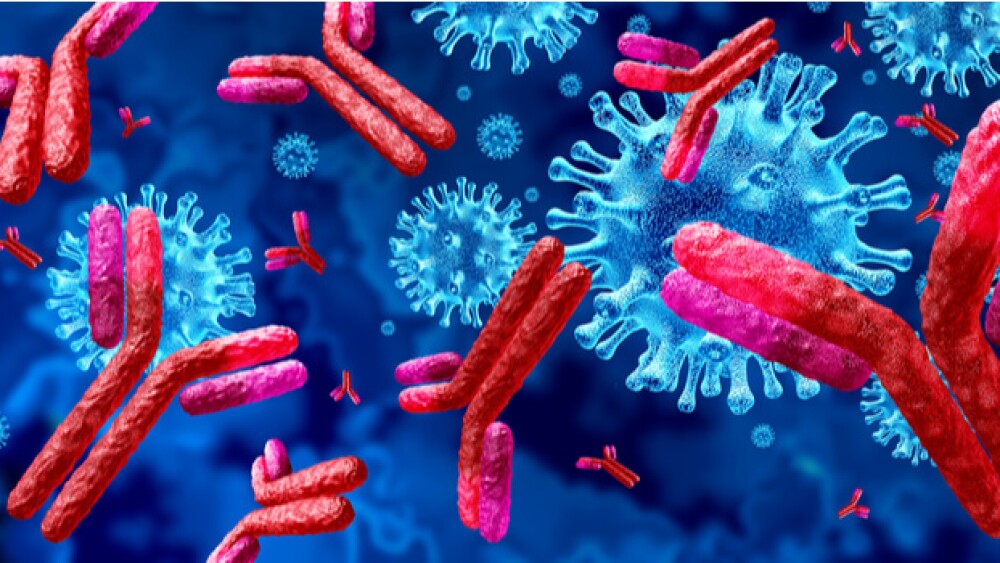Every week there are numerous scientific studies published. Here’s a look at some of the more interesting ones.
Every week there are numerous scientific studies published. Here’s a look at some of the more interesting ones.
Antibodies to COVID-19 Remain Stable or Increase 7 Months After Infection
A research study by Barcelona Institute for Global Health found that Immunoglobulin G (IgG) levels against the SARS-CoV-2 spike protein stay stable, and even increase, seven months after infection. The results are from a follow-up study in a cohort of healthcare workers. It supports the theory that pre-existing antibodies against common cold coronaviruses might protect against COVID-19. The research group followed a cohort of healthcare workers at the Hospital Clinic (SEROCOV) study from the early stages of the pandemic to evaluate antibody levels against different SARS-CoV-2 antigens over time. They analyzed blood from 578 participants taken at four different points between March and October 2020. They published the results in Nature Communications.
The data showed that most infections in the healthcare workers occurred during the first wave of the pandemic based on SARS-CoV-2 antibody increases observed in the blood samples.
“Rather surprisingly, we even saw an increase of IgG anti-Spike antibodies in 75% of the participants from month five onwards, without any evidence of re-exposure to the virus,” said Gemma Moncunill, senior co-author of the study. No reinfections were seen in the cohort.
The data also suggested that antibodies against human cold coronaviruses might offer cross-protection against COVID-19 infections. The people infected with COVID-19 had lower levels of human cold coronavirus antibodies. And asymptomatic patients had higher levels of IgG and IgA against the cold coronaviruses than people with symptomatic infections. Although it needs to be confirmed, this might explain the differences in susceptibility within populations.
Graphene on Surgical Implants Used to Kill Bacteria
Researchers at Chalmers University of Technology, Sweden, developed a new approach to prevent infections caused by medical implants. They created a technology that binds water-insoluble antibacterial molecules to graphene, which can be used to coat the medical devices. Bacteria are capable of forming biofilms, or impenetrable surface layers, on surgical implants. Biofilms are more resistant than other bacteria and as a result, the infections are usually difficult to treat, often requiring removal or replacement of the medical implants. The graphene was covered with usnic acid, extracted from lichens. Usnic acid has bactericidal properties.
The Link Between Stress Hormones in the Brain and Gene Targets
Investigators at the University of Bristol published research describing a link between corticosteroid receptors and ciliary and neuroplasticity genes in the hippocampus, the part of the brain that handles stress, learning and memory. The specific corticosteroid receptors were the mineralocorticoid receptor (MRO) and the glucocorticoid receptor (GR). The goal of the research was to determine what genes MR and GR interact with across the hippocampus genome during normal circadian variation and after acute stress. They identified a previously unknown association between the MR and cilia function. They also found the two receptors interact with several genes involved in neuroplasticity, such as neuron-to-neuron communication, learning and memory. Some of the genes have also been linked to mental health disorders such as major depression, anxiety, PTSD and schizophrenia spectrum disorders.
Beige Fat Helps Protect the Brain from Dementia
White fat is the undesirable kind, that stores excess calories (glucose) under the skin. Brown fat appears to be energy generators, such as when your body is cold and you shiver. A third type is called beige and is found mixed in with white fat. New research from the Medical College of Georgia at Augusta University finds that beige fat appears to decrease inflammation associated with white fat and may also provide protection from dementia. They worked in mice, both normal and knockout mice who had a specific gene knocked out that prevents adipocytes in the subcutaneous fat from becoming beige fat. On a high-fat diet, mice with normal amounts of beige fat developed diabetes, but transplanting beige fat into obese mice improved their metabolic profile. They also found that the beige fat improved memory and synaptic plasticity.
MANIAC Robots Can Deliver Drugs to CNS
Scientists at Weinberg Medical Physics developed tiny robots, dubbed MANIACs, for Magnetically Aligned Nanorods in Alginate Capsules, that may be able to deliver drugs to neural tissue. They are controlled using a magnetic field, which allows the “tiny tumbling soft robots” to move against the flow of fluids, climb slopes and travel through neural tissues, such as the spinal cord. Central nervous system (CNS) diseases are often hard to treat because of crossing the blood-brain barrier and because many of the parts of the body and nervous system affected aren’t related to the actual disease.
Microbes Help Reverse Aging in the Brain
Researchers at the University College Cork published research describing a novel approach to reversing aging-related deterioration in the brain. The approach revolves around the microbiome, the trillions of microorganisms that live in the body. In mice, they transplanted microbes from young animals into old animals, resulting in rejuvenating some aspects of brain and immune function. It involved fecal microbiota transplantation from either young or old donor mice into aged recipient mice.
“Previous research published by the APC and other groups internationally has shown that the gut microbiome plays a key role in aging and the aging process,” said John F. Cryan, Vice President for Research & Innovation, University of Cork, and principal investigator at APC Microbiome Ireland. “This new research is a potential game changer, as we have established that the microbiome can be harnessed to reverse age-related brain deterioration.”





